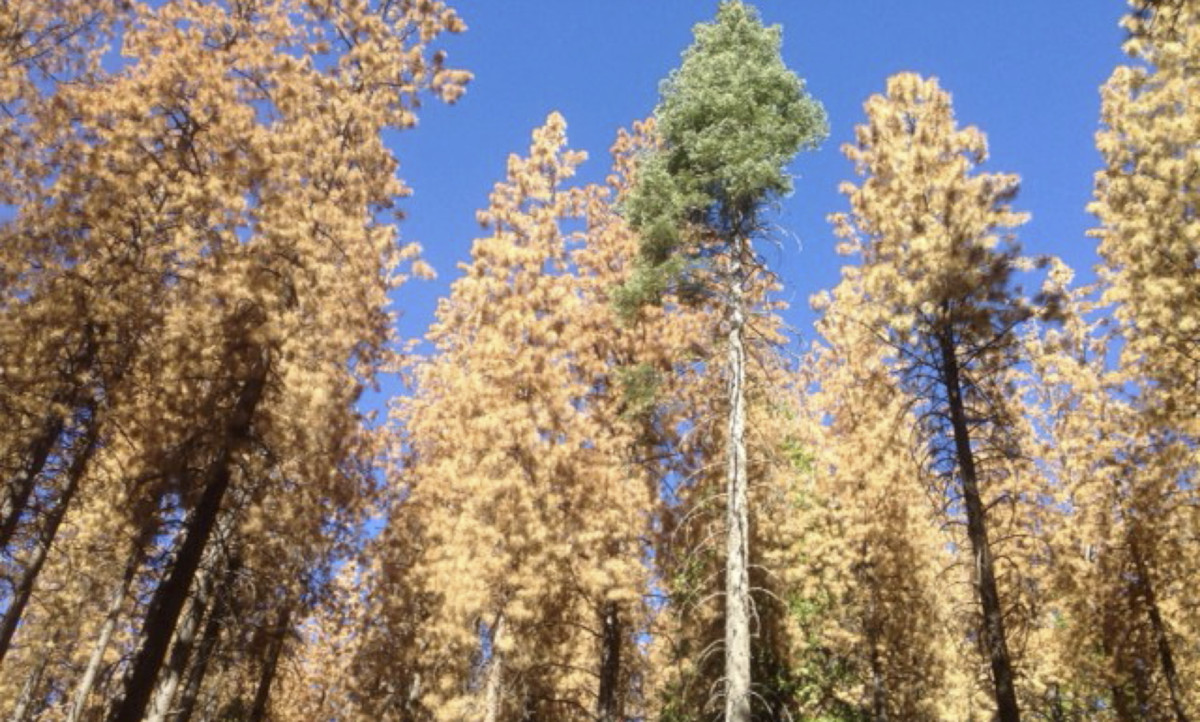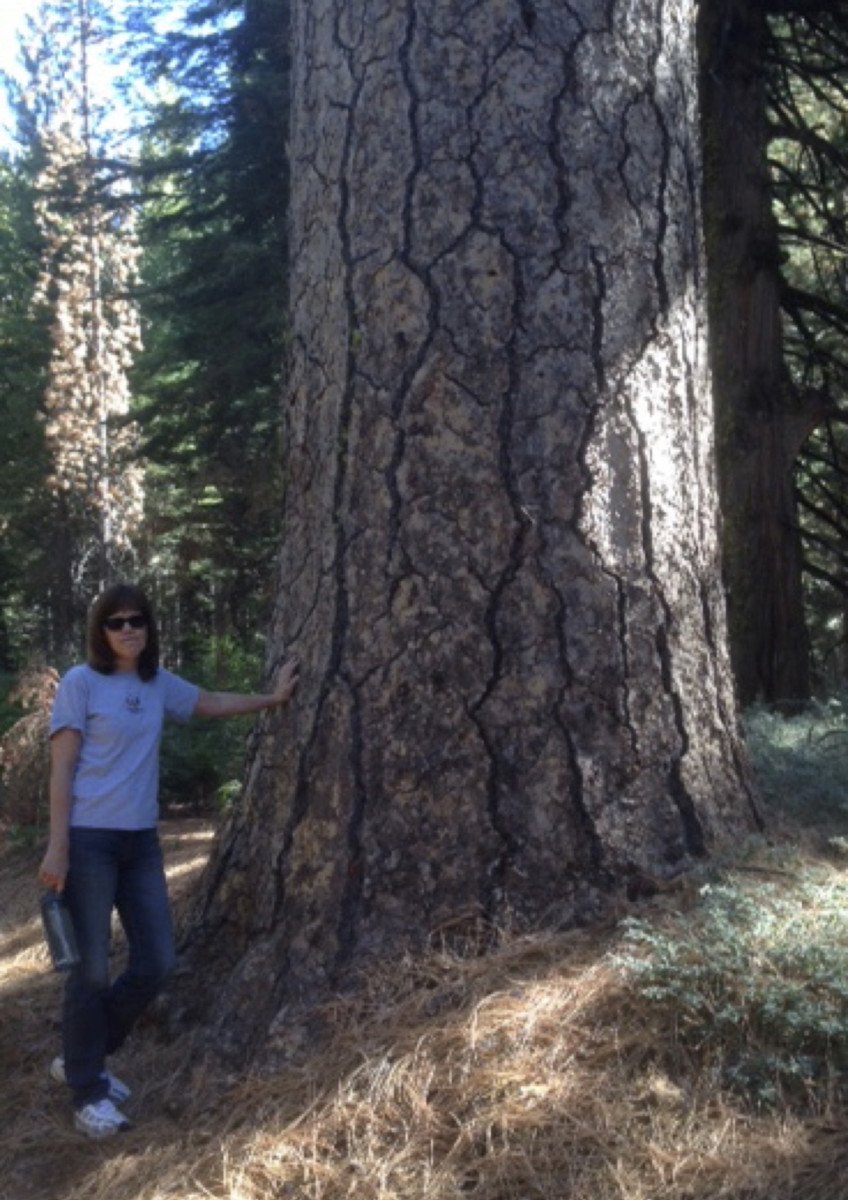

The photo above shows a stand of beetle-killed pines in Calaveras Big Trees State Park. Similar to the private timberlands and national forest lands around the Park, scattered blocks of pines have faded and died, with only white firs (as shown above) and cedars surviving amidst the many dead pines.
The big ponderosa pine shown at left is just one of many giant old trees that CSERC staff found freshly killed by bark beetles in Big Trees State Park. The biggest and oldest pines are often the trees that are hardest hit during beetle attacks, as proven by USFS studies showing alarming losses of precious old growth trees in the Sierra Nevada.
Yosemite National Park is also suffering severe conifer mortality along the western edge of the Park and even in the rich, moist conditions of Yosemite Valley. With beetle numbers so high and no simple solution available for treatment, any prediction for what 2017 holds for local forests is still speculation.

